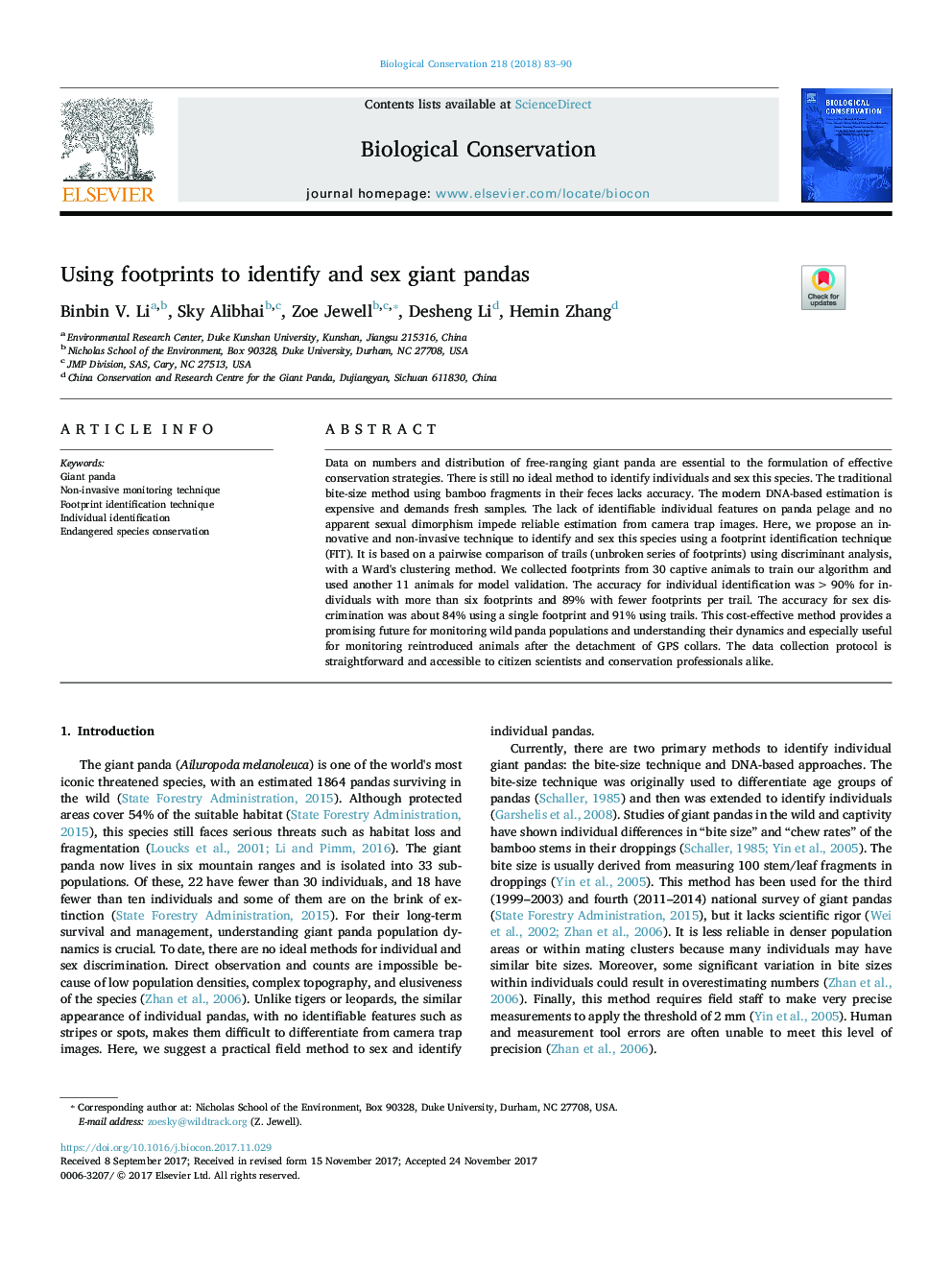| Article ID | Journal | Published Year | Pages | File Type |
|---|---|---|---|---|
| 8847497 | Biological Conservation | 2018 | 8 Pages |
Abstract
Data on numbers and distribution of free-ranging giant panda are essential to the formulation of effective conservation strategies. There is still no ideal method to identify individuals and sex this species. The traditional bite-size method using bamboo fragments in their feces lacks accuracy. The modern DNA-based estimation is expensive and demands fresh samples. The lack of identifiable individual features on panda pelage and no apparent sexual dimorphism impede reliable estimation from camera trap images. Here, we propose an innovative and non-invasive technique to identify and sex this species using a footprint identification technique (FIT). It is based on a pairwise comparison of trails (unbroken series of footprints) using discriminant analysis, with a Ward's clustering method. We collected footprints from 30 captive animals to train our algorithm and used another 11 animals for model validation. The accuracy for individual identification was >Â 90% for individuals with more than six footprints and 89% with fewer footprints per trail. The accuracy for sex discrimination was about 84% using a single footprint and 91% using trails. This cost-effective method provides a promising future for monitoring wild panda populations and understanding their dynamics and especially useful for monitoring reintroduced animals after the detachment of GPS collars. The data collection protocol is straightforward and accessible to citizen scientists and conservation professionals alike.
Related Topics
Life Sciences
Agricultural and Biological Sciences
Ecology, Evolution, Behavior and Systematics
Authors
Binbin V. Li, Sky Alibhai, Zoe Jewell, Desheng Li, Hemin Zhang,
